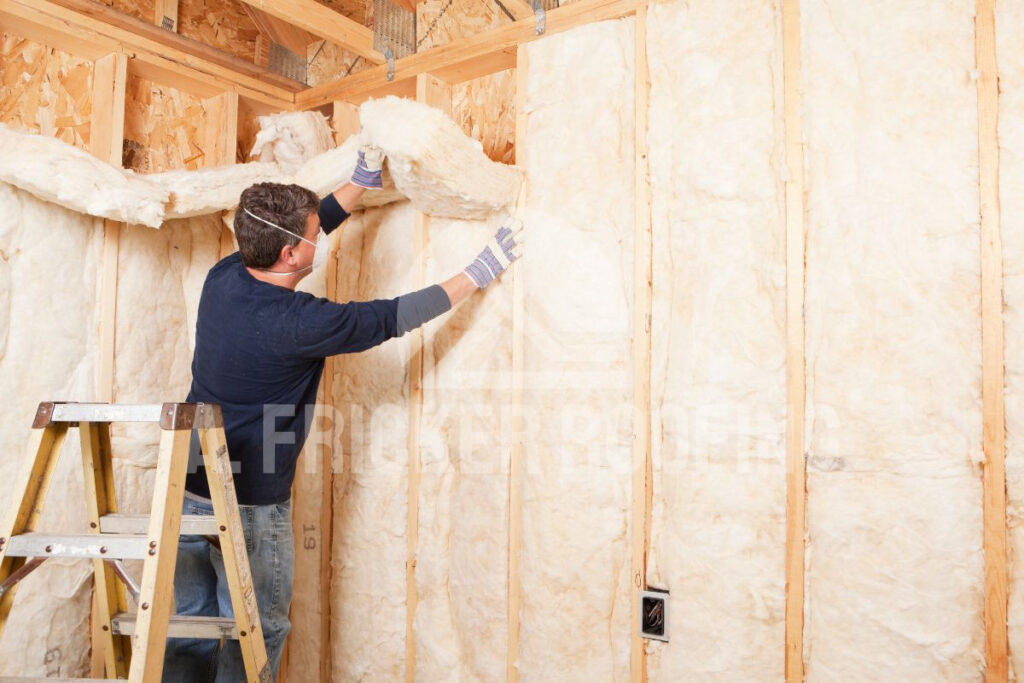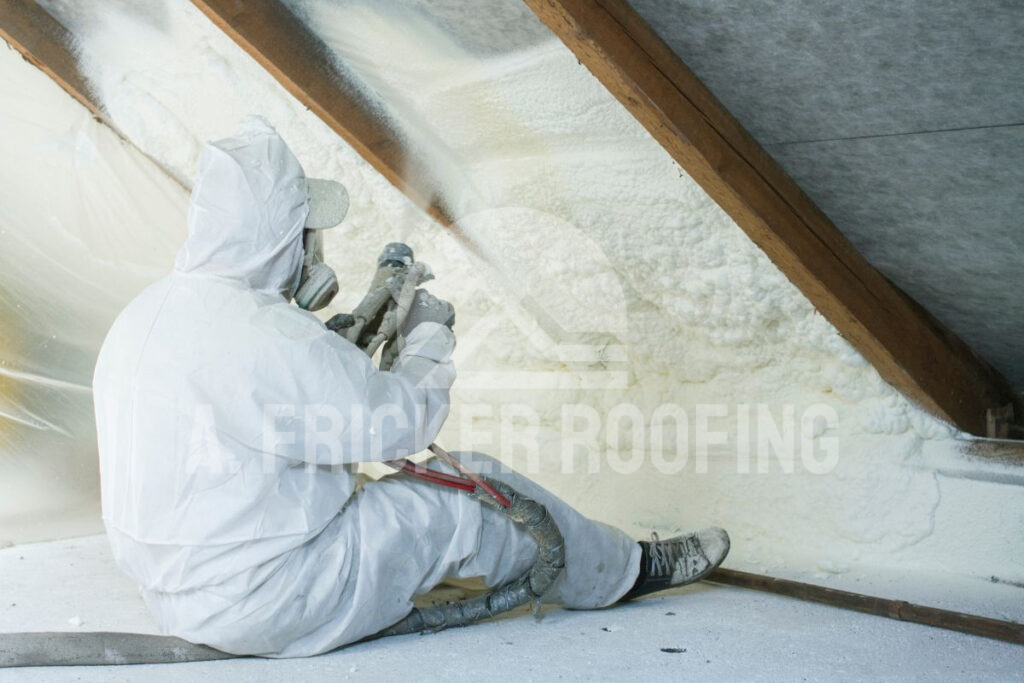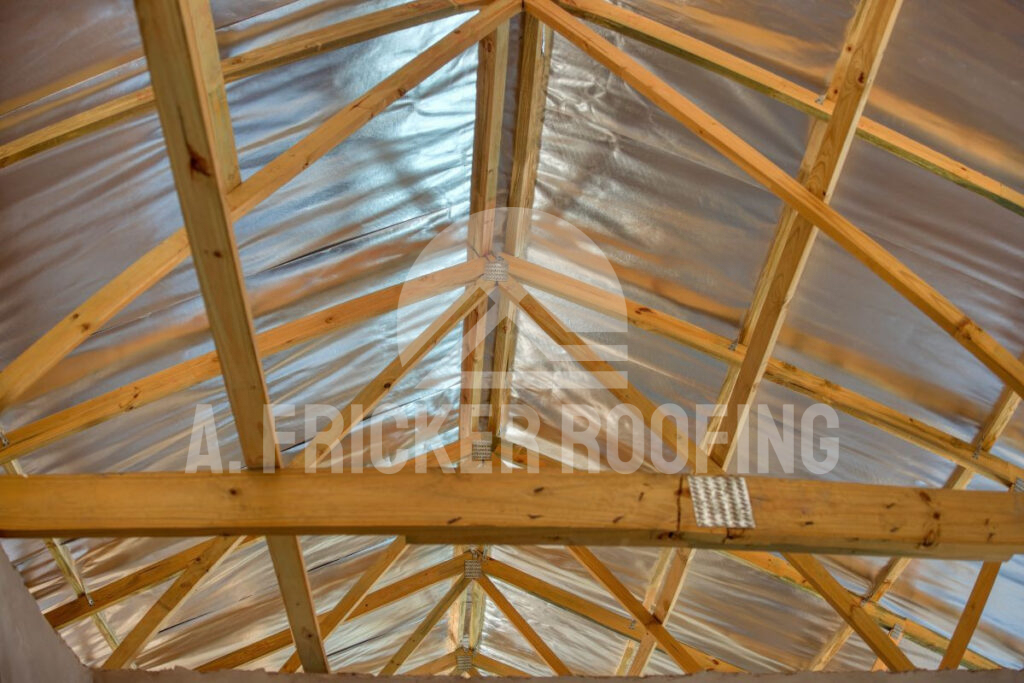Acting as a thermal barrier, attic insulation restricts undesired heat exchange between your house interiors and the outdoors. If you want to know more about attic insulation, its types, and the installation process, read this blog post through the end.
Let’s first understand the importance of attic insulation for your property.
The Importance of Proper Attic Insulation
A well-insulated and air-sealed attic is essential for maintaining comfortable indoor living conditions without putting additional pressure on heating or cooling systems.
Without adequate attic insulation:
- Air leakages in buildings can cause cooling and heating systems to work harder, leading to higher energy bills.
- This can also make it harder to maintain a comfortable temperature inside, especially during extreme weather conditions.
- Uncontrolled temperature fluctuations can create humid conditions, which can contribute to mold growth.
Proper attic air sealing not only helps to make your home cozier but also reduces energy consumption considerably. Therefore, appropriate attic insulation is essential for homeowners who want to reduce energy costs.
Different Types of Attic Insulation Materials
There are a number of attic insulation types available on the market, each with its unique attributes and cost implications. Let’s delve into different types of attic insulation materials.
1. Fiberglass (Batts and Blown-In)

If you’re considering insulating your attic, you may want to explore fiberglass insulation. It comes in two forms: batts and blown-in, and it is made up of tiny glass fibers that are woven together to create a fluffy material. The most remarkable thing about fiberglass insulation is its thermal performance.
It can keep warmth inside during the cold winter months and keep your home cooler during the hot summer months. Moreover, this type of insulation is fire-resistant, non-corrosive, and does not support the growth of mold or mildew.
2. Cellulose (Loose Fill)

If you are looking for an eco-friendly option, you might want to consider cellulose insulation, which is mostly made from recycled materials. This material is marketed as “loose fill” and is great at filling various nooks and crannies in attics. Cellulose insulation is heavier than fiberglass and is, therefore, more suitable for use in cooler climates where dense insulation is required.
3. Spray Foam (Open and Closed Cell)

Spray form insulation is known for its fluidity during installation, which makes it a great choice for covering large areas quickly. This is why many homeowners and contractors prefer it over other insulation materials. There are two types of spray foam: open-cell and closed-cell.
The main difference between them is their density levels and thermal resistance. One of the best things about spray foam is its durability. It can last for up to 80 years, which is pretty impressive! That’s why many people choose spray foam for insulation in various settings. However, spray foam insulation has some problems and drawbacks like other insulation materials.
4. Radiant Barriers and Reflective Insulation

Radiant barriers and reflective insulation offer another option for insulating your attic. These materials work by reflecting radiant heat rather than impeding conductive or convective heat flow. The shiny, aluminum-like surface of these barriers reflects heat, which helps keep your home cool during the hot summer months. This is just one more way to keep your attic insulated and your home comfortable year-round.
Understanding R-Value: What It Means For Your Attic
When discussing attic insulation, one term you’ll frequently encounter is ‘R-value.’ But what exactly does it mean? In simple terms, the R-value measures the thermal resistance of an insulation material. Higher R-values signify better insulating power.
To further simplify, let us put it this way: The ‘R’ in R-value stands for ‘resistance.’ Therefore, attic insulation with a high R-value will demonstrate strong heat flow resistance and enhance energy efficiency.
The Role of Climate in Determining Ideal R-Values
Climate plays an important part in determining the ideal insulation R-value for your home. Different climates require different levels of insulation. For example:
- Homes located in colder climates typically require higher R-values to counteract severe temperature drops.
- Conversely, homes situated in warmer climates can function efficiently with lower R-values, allowing comfortable indoor temperatures throughout the year.
How to Choose the Right Insulation Material for Your Attic
When it comes to selecting the appropriate attic insulation material, there’s no one-size-fits-all solution. The decision rests upon a combination of factors such as your budget, climate zone, and house characteristics.
1. Consider Energy Efficiency Ratings
R-value plays a crucial role when choosing an insulation type. Depending on your geographic location (or climate zone), you’ll need to choose insulation with the required insulation value.
2. Assess Installation Requirements
Different types of insulation demand professional expertise for the precise application techniques they call for. If you’re considering DIY installation methods, think about how complex the process will be with your selected material.
3. Stick to Your Budget
Higher-grade materials strain your budget initially but could result in substantial reductions in your energy bills over time.
Finalizing the ideal insulation type for your attic isn’t necessarily a simple task. However, by thoughtfully considering these factors, you can make an informed decision tailored to your specific needs and circumstances.
Benefits of Installing Attic Insulation
Installing attic insulation can seem a daunting task. It’s messy, labor-intensive, and may disrupt your routine for a short while. The benefits, however, are worth considering and often outweigh the inconvenience.
Let us walk you through some notable advantages that come with upgrading your attic insulation.
1. Enhanced Energy Efficiency
The first and perhaps the most notable benefit is improved energy efficiency. Research indicates that properly installed attic insulation can lead to significant annual cooling cost savings. With such enhanced insulation, heat transfer between indoors and outdoors can be considerably reduced. This results in stable indoor temperatures regardless of outdoor variations – limiting extensive use of heating or air conditioning systems.
2. Cost Savings Over Time
Improved energy efficiency directly translates into noticeable cost savings on monthly utility bills. The initial investment in superior insulating material will eventually pay off.
3. Reduced Environmental Impact
In addition to economic advantages, an upgrade in attic insulation can make a positive contribution towards environmental conservation by reducing energy consumption.
With little tweaks in your home, like an insulation upgrade, you move towards responsible living.
Overall, installing attic insulation can increase household efficiency, cost savings, and an eco-friendlier lifestyle. All of this ensures optimum protection against the harshness of changing seasons.
How Much Insulation Do You Really Need?
Determining how much insulation you need in your attic isn’t always straightforward. It’s not merely a question of filling up space, it highly depends on the climate zone in which you live and the type of heating and cooling systems your home has. So, before installing attic insulation, consult with your roofing contractor to help you figure out the right amount of insulation required in your home.
Step-by-Step Guide to Installing Attic Insulation
Installing attic insulation might seem daunting at first, but with the right knowledge and assistance, it becomes a manageable project. This section offers a detailed and simple guide on how to insulate the attic. Let’s break down the process into manageable steps:
1. Gather the Required Materials
Before starting, you’ll need to gather the necessary tools and materials, which include:
- Insulation material of your choice
- Utility knife for cutting insulation batts if that’s what you opted for
- Stapler, if installing radiant barrier or similar
- Safety gear: goggles, mask, and gloves
Ensure all your materials are on hand before commencing work in the attic.
2. Prepare Your Attic
Preparation begins with ensuring that your attic is properly ventilated. Also, any existing leaks or holes should be patched up. These could be hidden behind old insulation or in the roof deck. When it comes to addressing major issues like faulty wiring or severe mold infestation, it may be best to call in a professional.
3. Install the Insulation Material
With everything ready and safe, begin this process mindful of maximizing efficiency by minimizing gaps where heat can escape or enter.
- If you are planning to install batts or blankets in your attic, it is recommended to start unrolling them from one end of the attic and gradually work your way toward access points such as hatches or doors.
- On the other hand, if you are planning to use loose-fill cellulose, you will need blowing equipment that disperses the material evenly across surfaces. This requires a careful approach to ensure that the material is spread uniformly.
- If you plan to use spray foam, it’s important to apply it with an even hand along soffits while gradually filling outwards. It’s crucial to be careful not to overspray while doing this.
Remember: The best way to insulate an attic effectively will depend upon selecting the correct R-value for your geographic location and maintaining uniform density across layers.
Contact Professional Roofers In Tulsa, OK, For Your Attic Insulation Needs
Now that you know the different types of insulation materials and how to choose one for your roof, you can make an informed decision for your home. If you are planning to insulate your attic, contact professional roofers for assistance.
The skilled roofers at A. Fricker Roofing and Waterproofing can effectively insulate your attic without compromising the integrity of your roof. Contact us today at (918) 402-7167 and talk to a professional roofer. Our team will inspect your roof and attic before installing the right insulation in your attic.

